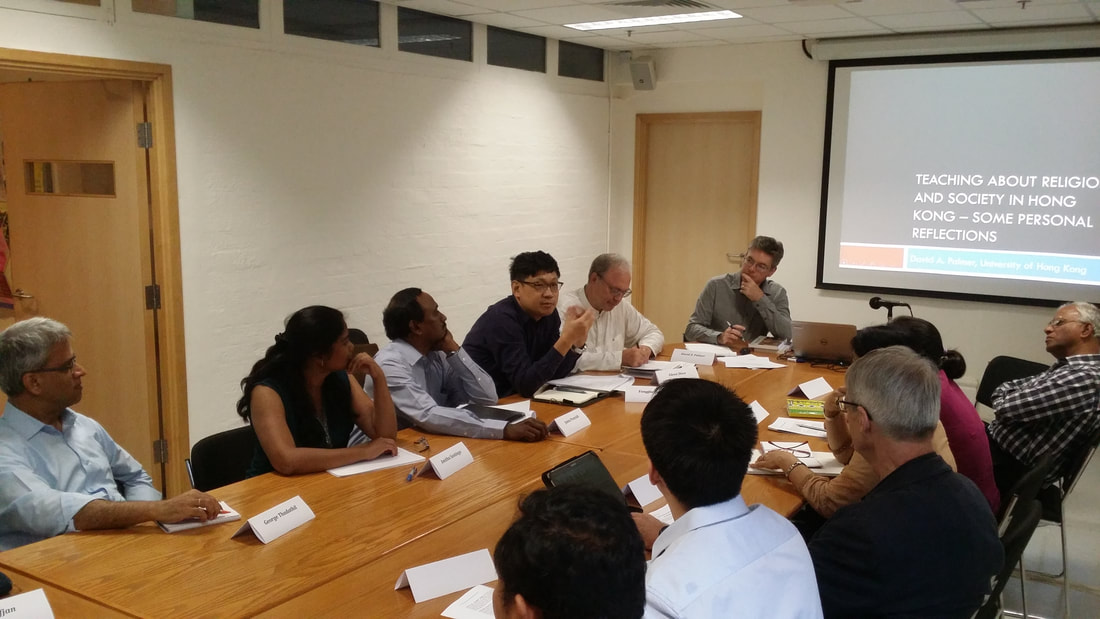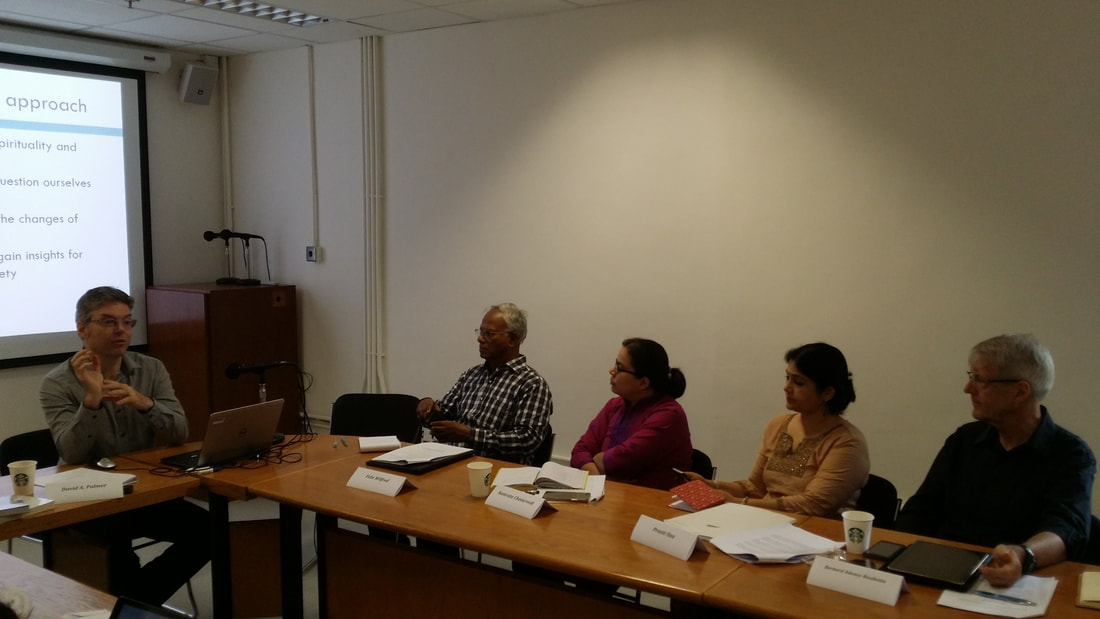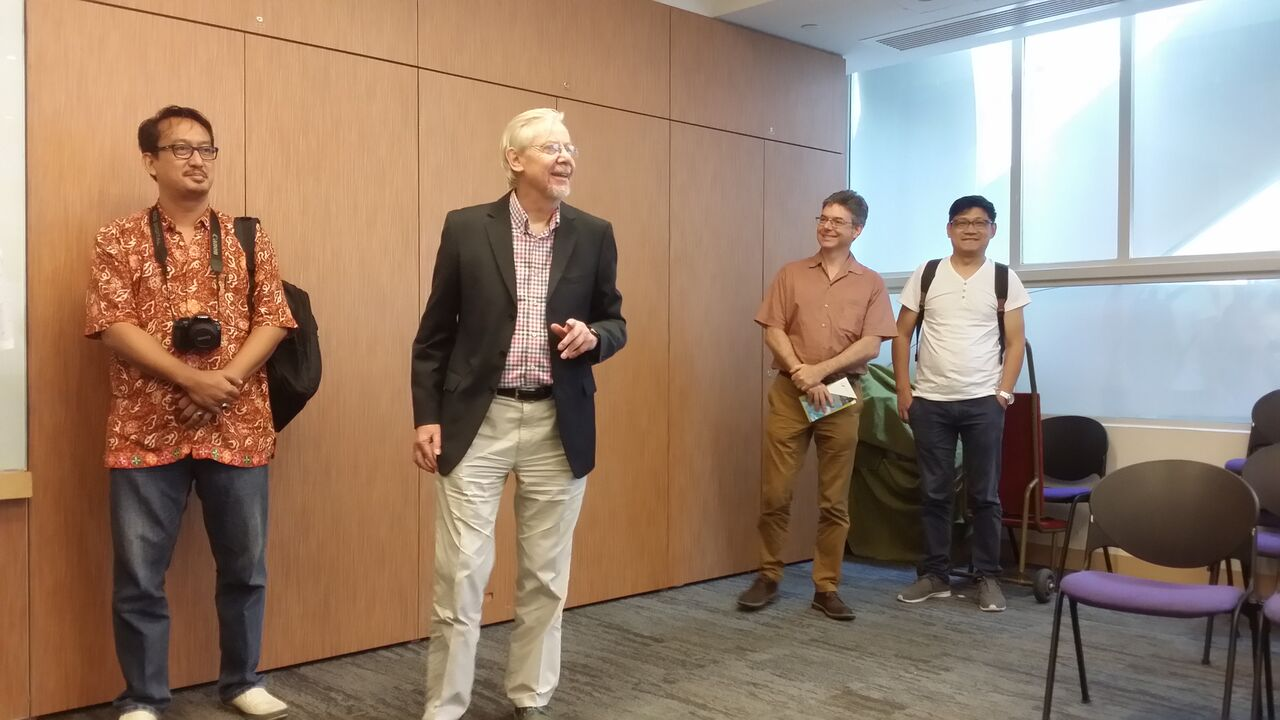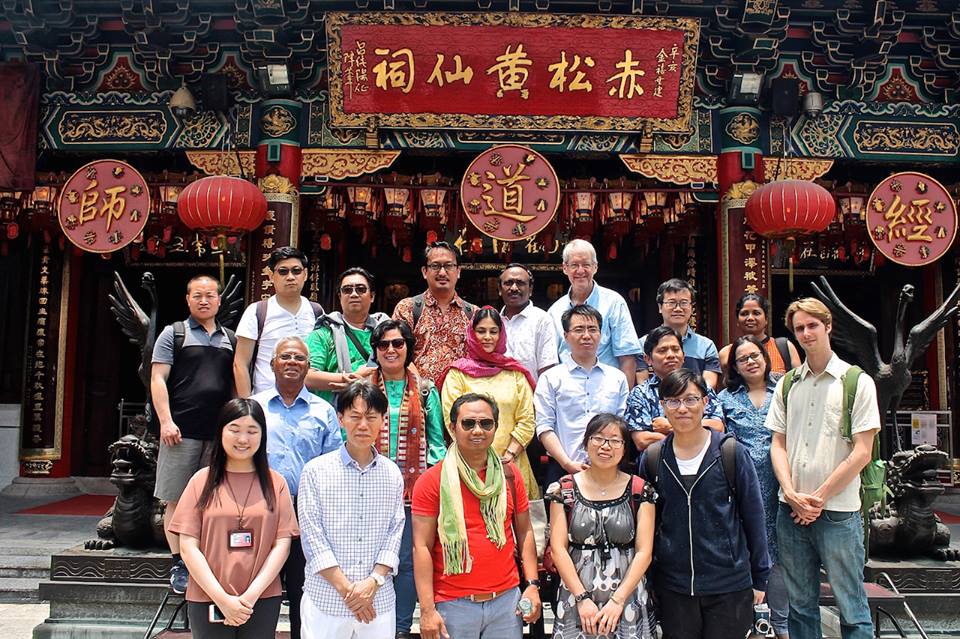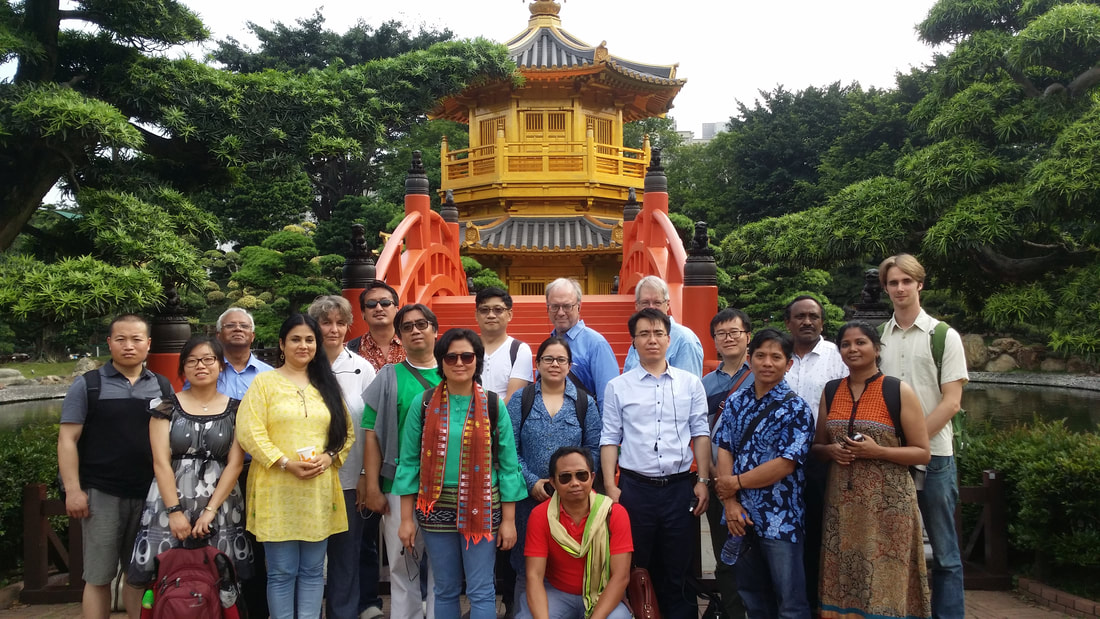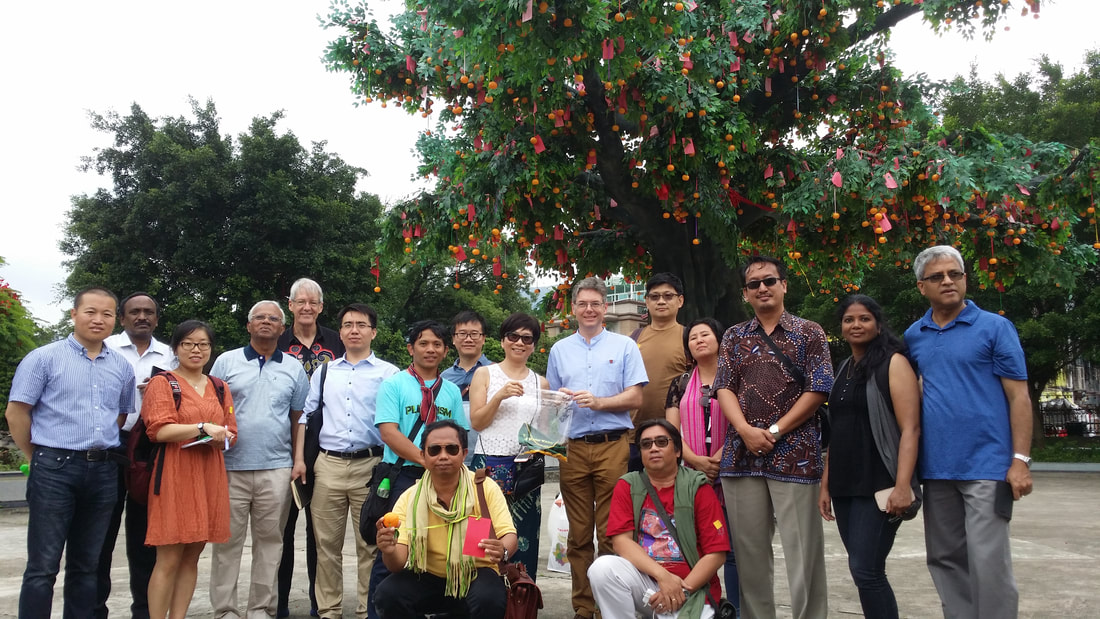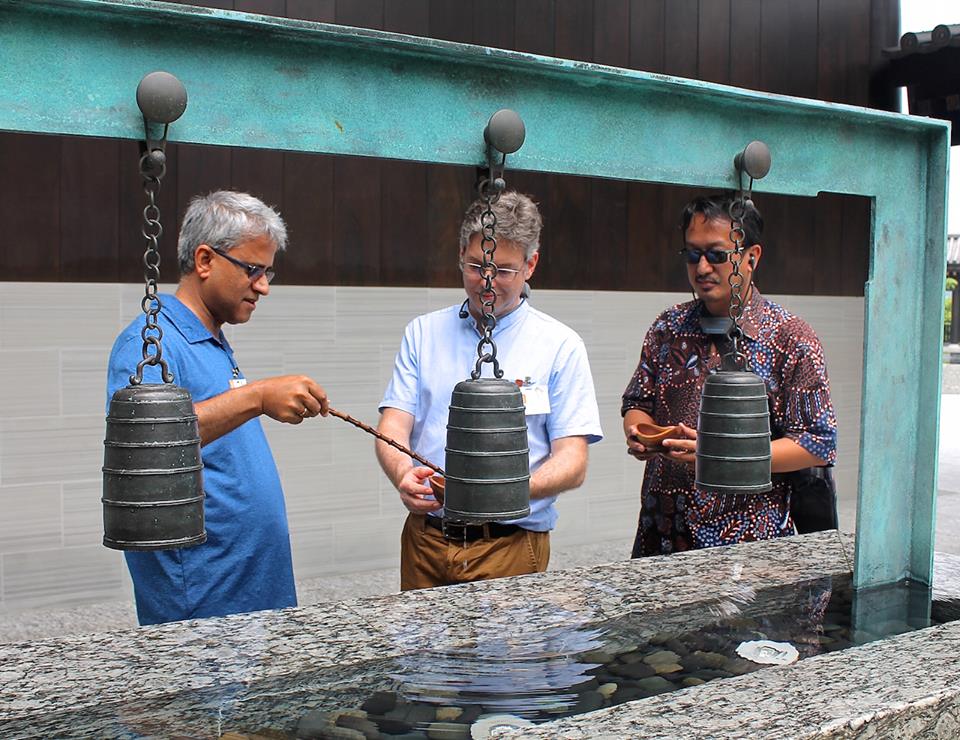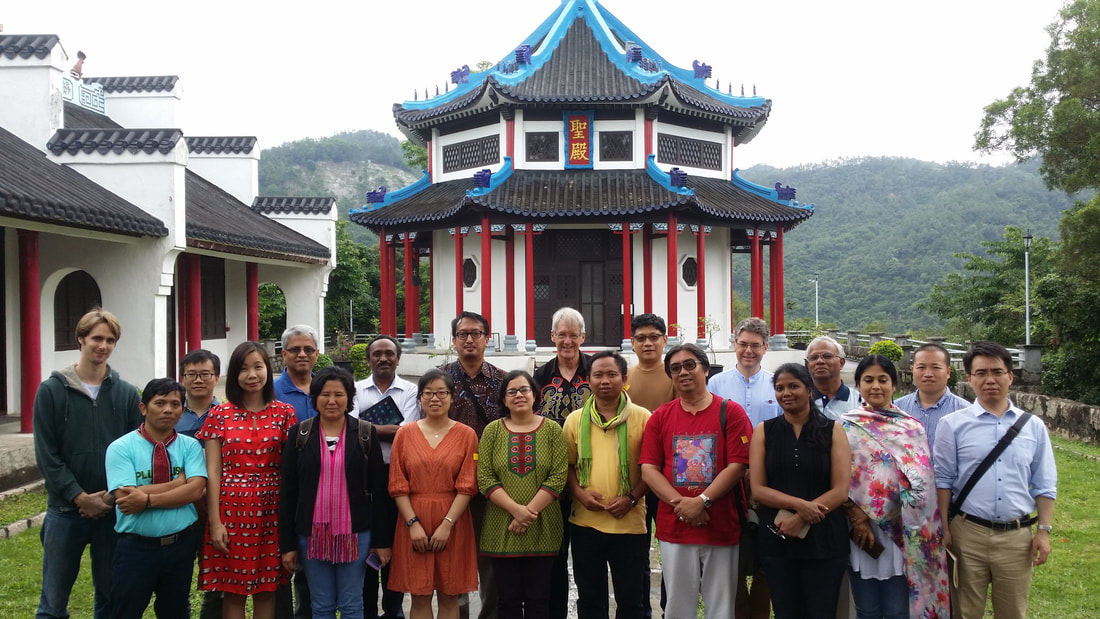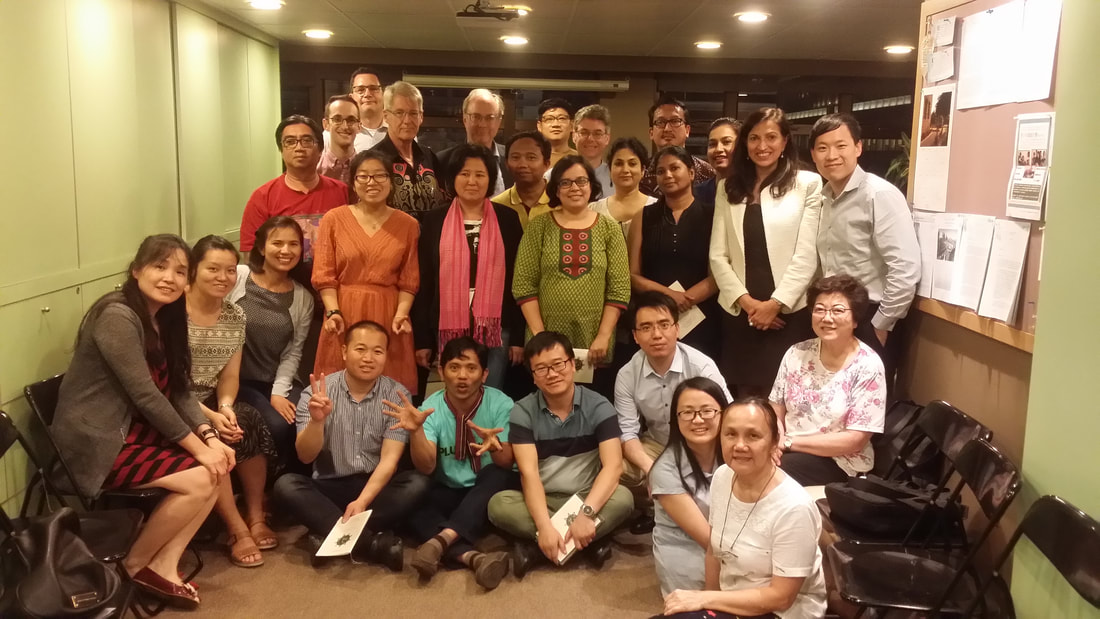Upcoming event
Our second-year summer school programme will be held in May 14-18, 2018, Chennai, India. The event is funded by the United Board for Christian Higher Education in Asia, and is supported by the Asian Centre for Cross-Cultural Studies based in Chennai.
Project activities
“New Approaches to Religious Pluralism in Asia” is a three-year project which aims to build research, teaching and collaborative capacity among a core network of junior and senior scholars in India, China, and Indonesia through a series of three annual summer schools to be held consecutively in each of the three countries. Our research objectives include (1) to produce an edited academic volume or journal issue on new approaches to religious pluralism in Asia; (2) to produce resources (such as teaching modules, website, workshop materials, etc) for knowledge exchange, dissemination or teaching on this theme, suitable for use in local Asian contexts. In the second yearly workshop/summer school, to be held in May 2018 in Chennai, the participants will present their first drafts of chapters for the book, and preliminary materials for educational use or public engagement on religious pluralism in their local context. In the third yearly workshop/summer school, to be held in May 2019 in Yogyakarta, the participants will present the revised versions of their educational materials, as well as their academic chapters, which the project leader will then prepare and submit for publication.
First-year summer school, Hong Kong 2017
The first-year summer school held in Hong Kong during May 14-19, 2017 comprised three days of seminar/presentation/discussion and two days of field trip to nine religious spots in the city. The participants were required to (1) give a brief sharing on how they incorporate themes related to religion in the courses they teach, and on difficulties and challenges they face when teaching about religion; (2) deliver a 20-minute presentation on their current research related to religion, and; (3) take part in the advanced reading seminar on The Crisis of Global Modernity written by Prasenjit Duara.
Reflections on "Teaching about Religion and Society in Hong Kong" May 15, 2017
Two days of field trip in Hong Kong
The project aims at establishing a collaborative network across India, China and Indonesia not only at the level of academic publication, but also at the level of religious conversations where the participants can explore different religious practices and acquire insights for future research. In two days of time on May 17 and on May 19, we visited nine remarkable religious spots in Hong Kong which together display a board spectrum of faith, from local/popular to international/global, or from eastern to western. For example, the group was well received by the Vine Church in Wan Chai whose followers position themselves as an international Christian community; and on the other day, the group interviewed villagers in Lam Tsuen whose ancestors have been looking after their local temple for more than two hundred years. We also experienced the Pure Land Buddhism in Chi Lin Nunnery and Tsz Shan Monastery, and visited the Daoist spot Wong Tai Sin Temple where a mixture of Confucianism-Daoism-Buddhism can be observed, as well as the Tao Fong Shan Christian Centre where beautiful Chinese-style church architects are built. The field visit ended at the Hong Kong Baha’i Centre where the participants took the opportunity to discuss the possibility of achieving “unity in diversity in religion” with the Baha’i.
The Vine Church
Pastor Tony Read sharing his experience in The Vine Church, May 17, 2017
Namrata Chaturvedi writes, "The Protestant church with its no-walls mode of engagement was a well thought out initiative in reaching out to the downtrodden, in the spirit of liberation theology. Its emphasis on reorienting the tropes of Christianity by secularising the space is an attempt to reestablish the significance of religion in a developed, capitalist society."
Preeti Oza writes, "Pastor Tony Read welcomed us there. My first reaction was towards its very deliberate ‘Un-Church’ look. The casual ambience of a coffee bar was very comforting for the beneficiaries like the refugees and other such people. We saw many activity rooms where the community activities were taking place along with the counselling unit."
Wong Tai Sin Temple
Visiting the Wong Tai Sin Temple on May 17, 2017
Al Makin writes, "The Wong Tai Shin temple, for instance, exhibits pluralism of spirituality and religiosity in many ways. The colorful and luxurious temple in which the spirits of Daoism, Confucianism, and Buddhism are manifested seen in the statues and symbols is indeed signs of pluralism. The three traditions are mixed and blended in various forms and ways. A big room in the temple shows at least 60 Gods worshipped differently in every year. The three religious traditions are respected and preserved in many symbols."
Daniel K. Listijabudi writes, "Wang Tai Sin Temple, who invites so many people to come and pray, surely prepare the adherents through a Sacred Rites Way. There are many symbols (earth, fire, water, air and wood), regarding the Feng Sui and figures to be worshipped, specific colors, drawings, etc, with whom the adherents may expressed their faith and will to be answered through a proper way of praying."
Chi Lin Nunnery
Visiting the Chi Lin Nunnery on May 17, 2017
Amitha Santiago writes, "The Nunnery with its Tang dynasty architecture, as well as the garden in the midst of public space brought to mind that the desire for belief often negotiates the ‘Real’ by transposing the belief into the space of the Imaginary so that belief survives. Further, the actions prompted by that (now displaced) belief survive too. Like Hegel’s hieroglyph that transcends to become a thing in the Imaginary I found the rocks and intentionality of the spaces created in the garden, in their very materiality, making a leap of faith. The bonsoi held up artificially symbolized in my understanding the human effort that is required to displace one’s belief onto objects so that like the hieroglyph it attains symbolic energy in an ever delayed chain of signification."
Wang Ruijing writes, "What caught my eyes firstly is the globalizing process of constructing those religious institutions, particularly Chi Lin Nunnery. I felt sensitive to globalization due to the course “globalization, mobility and Chinese society” I teach. The nunnery was renovated in Tang dynasty style. However, its architects visited Japan rather than China to learn this Tang dynasty architectural style which is believed that the ancient Japanese learnt from Tang China via the Maritime Silk Road during the pre-modern phase of globalization. In the sense, it is an expression of the “circulatory history” discussed in Duara’s book. According to the guard, the temple is designed with Japanese ideas, built with woods from other countries, painted by German paint, and the garden is arranged with rocks, plants, stones, trees, flowers transported from all over the world. In a word, it basically took the entire world to construct the nunnery."
Lam Tsuen village
Group photo in front of the Wishing Tree in Lam Tsuen on May 19, 2017
James Ponniah writes, "The case of Lam Tsuen village indicated how, social relations and community bonding tied to a territory gets not only mapped into religious sites but also reenacted through certain religious beliefs and rituals, as narrated by the local experts. That religion is a site of legitimization of social and political power relations is clearly demonstrated through a worship of a local deity who unites different villages and its members into a religio-political conglomeration, which is very true of folk religious traditions in India."
Tsz Shan Monastery
“Offering water” in the Tsz Shan Monastery on May 19, 2017
Preeti Oza writes, "This is a very new Chinese Buddhist Monastery. A very beautiful Tang Dynasty architecture was used to build the whole place. The extreme display of minimalism, a pure sense of aesthetics, spiritual quietness, a wonderful enthusiastic guide, a serene and beautiful environment, a very personal sense of faith and a very traditional Buddhist way of offering water made the entire visit a highly serene experience."
Namrata Chaturvedi writes, "The Buddhist monastery that replicated the Tang dynasty’s architectural and cultural glory was a similar exercise in nostalgic preservation. The emphasis on Chinese Buddhism being different from (with the undertone of superior/special) Indian Buddhism highlighted the ‘cultural logic of religious revivalism’ in developed societies."
Tao Fong Shan Christian Centre
Visiting the Tao Fong Shan Christian Centre on May 19, 2017
Amitha Santiago writes, "The integration of Chinese and Buddhist architecture, symbolism and artefacts with those of Christianity was exciting. The bringing together of two very different ways of seeing the world revealed excellent forethought in the direction of furthering Christianity’s reach into the Chinese hills. Retention of cultural affidavits rather than the erasure of native culture was effectively achieved."
James Ponniah writes, "Another aspect of local and localized religious phenomena seen in Hong Kong was the East Asian holistic perspective and the inseparability of relationship between religion and nature. The flora and fauna of the natural world form intrinsic part of the religious realm. The natural world has merged so harmoniously into the religious that the dichotomy between the transcendent and the immanent, the sacred and the mundane seems non-existent, and it is true not only of the Chinese religions traditions but also of Christianity as we witnessed in the case of Tao Fong Shan Christian Centre."
Hong Kong Baha'i Centre
Visiting the Hong Kong Baha’i Centre on May 19, 2017
Al Makin writes, "The Baha’i gathering is indeed a pluralist interpretation of spirituality in line with plural and business oriented Hong Kong population. The inclusive Baha’i prayer is a model of pluralist spirituality."
Daniel K. Listijabudi writes, "The last place, the Baha’i Center is a place when I experience such of openness to other religious perspective; even embrace some marrow of essence of world religious tradition. I learn a lot."
Preeti Oza writes, "The Baha’i s who welcomed us were all a global family from various countries but the oneness of the faith/religion was the unique feature of the evening. A very interesting combination of devotional music, information sharing, experience barter and amazing hospitality has left a very lasting impression for me about Baha’i faith and believers."
Forming a writing framework
Through three days of intensive discussion, the participants have clarified the context for the project and have probed into six areas of knowledge which lay the foundation for the writing framework of the project: A. Pluralism and Public Policy, B. Pluralism and New Religious Movements, C. Religion and Identity Politics, D. Gender and Religion, E. Indigenous Cosmologies, and F. Interfaith Relations, each of which consists of two or three articles contributed by the participants.
A. Pluralism and Public Policy
China: Yongjia Liang
Indonesia: Dicky Sofjan
India: Namrata Chaturvedi
B. Pluralism and New Religious Movements
India: George Thadathil
Indonesia: Al Makin
China: Tao Yin
C. Religion and Identity Politics
India: Preeti Oza
Indonesia: Fransiska Widyawati
China: Luo Qiangqiang
D. Gender in/and Religion
Indonesia: Bernard Adeney-Risakotta
India: Amitha Santiago
China: Liu Dongxu
E. Indigenous Cosmologies
Indonesia: Samsul Maarif
China: Ruijing Wang
F. Interfaith relations
China: David A. Palmer
India: James Ponniah
Indonesia: Daniel K. Listijabudi
China: Yongjia Liang
Indonesia: Dicky Sofjan
India: Namrata Chaturvedi
B. Pluralism and New Religious Movements
India: George Thadathil
Indonesia: Al Makin
China: Tao Yin
C. Religion and Identity Politics
India: Preeti Oza
Indonesia: Fransiska Widyawati
China: Luo Qiangqiang
D. Gender in/and Religion
Indonesia: Bernard Adeney-Risakotta
India: Amitha Santiago
China: Liu Dongxu
E. Indigenous Cosmologies
Indonesia: Samsul Maarif
China: Ruijing Wang
F. Interfaith relations
China: David A. Palmer
India: James Ponniah
Indonesia: Daniel K. Listijabudi
